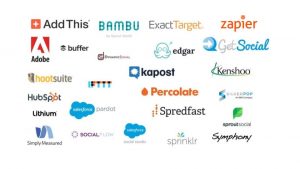In today’s digital world, social selling is of vital importance. There are a number of benefits to using social platforms to increase your presence in the social selling space. B2B decision makers often use social media to inform various decisions; salespeople are significantly more likely to achieve their quota than those who don’t; and social leads are seven times more likely to close than those cultured elsewhere.
While the practice is undoubtedly worthwhile, it’s hard to get a sense of exactly how to proceed. Some articles will direct you to Twitter, LinkedIn, or even both; and others won’t even mention those sites. Some will tell you to tweet 20 times a day to increase engagement, while another site will tell you not to post anything at all, and only to like and retweet others posts.
This is one reason why social selling has had a hard time getting off the ground. This practice is more art than science. You can’t simply start tweeting 20% more often than you already were and expect to see significant growth. You can’t just include #iFollowBack on your Twitter bio and expect to see your social network expand. Social selling takes a lot of patience, and a lot of persistence.
There isn’t a single tool or tip that will turn you into a social selling superstar, but utilizing the following guidelines will undoubtedly help you get there.
Engage, engage, and engage some more
If you’re lucky enough to talk with a social selling expert, they’ll place significant emphasis on this point.
As Koka Sexton noted, “to become a trusted advisor, salespeople should post about four times as much educational materials as product or company information. ‘Keep sending [users] educational materials, then drop in something on your company, and they will click it.’”
The point here is that you can’t simply become a spam bot. If all you do is post articles about the greatness of your product or company, users will tune you out, or worse, unfollow you. You need to provide value to your followers, and give them a reason to stay engaged with you.
Automate part of your social selling tasks
One of the hardest parts of social selling is being able to commit to posting articles on a regular enough basis. After all, you’re a salesman, not a social media employee. Fortunately, there are a number of services available that can help you post a steady stream of content across multiple social platforms. Take for example, Buffer.
With this service, you can schedule tweets for days, weeks, months, or even years in advance (although we don’t advise going that far into the future).

Buffer is a fantastic tool, and if you’re thinking about getting into social selling, it’s an excellent place to get your feet off the ground. You can schedule your content throughout the day, and use your time more effectively. Instead of spending a couple hours throughout the day posting material to make sure your social media accounts are active, you can simply do it all at once.
The key is to making your tweets sound authentic and in the moment, rather than automated hours before. One way to accomplish this is to schedule your content for odd times. While that sounds trivial, it’s a sneaky trick, but one that can help differentiate you from others. Generally, when people plan out their content like this, they post at times like 1:00, 1:15, 1:30, 1:45, etc., which is a dead giveaway for scheduled content. But posting at strange times like 2:12 won’t send off any red flags.
While Buffer can help you scheduled educational and interesting posts, it’s ultimately up to you, the salesperson, to engage with your audience, and provide customized value beyond published content. You need to make yourself an asset to these consumers, which can only be done through personal interactions, and engaging with a large variety of people. There are so many tools out there, and it’s vital that you take the time and effort to find them; some of which can be found here.
Once you’ve built a following, emphasize relationship building, not closing a deal
As the term social selling has grown in popularity, so too has the misunderstanding of what it actually means. Too often people take it to mean that you’re using social media to close deals and make sales via 140 characters. Social selling actually refers to “the process of researching, connecting, and interacting with prospects and customers on social media networks.”
Rather than heading to Twitter and LinkedIn armed with sales pitches, you should be following experts in the field, participating in online chats and groups, and trying to help others find valuable solutions; which won’t necessarily be yours.
This is the most difficult concept of social selling to grasp. How does helping someone else find a product that isn’t yours help you? Immediately, the answer is, it doesn’t help you; but in the long run, suggesting and pointing people to alternative solutions will give you credibility, and provide you with a base to grow as an expert in your industry.
The future of selling is social selling
When asked what he thinks the future of social selling is, Matt Heinz, the president of Heinz Marketing, Inc., responded by saying that soon enough, we’ll simply call it selling. “Do you really want to keep cold calling? Or would you prefer to respond to buying signals and trigger events that immediately give you a rapport, context, and engagement from more prospects.”
While social selling doesn’t have the highest pedigree when it comes to other selling tactics, as more data comes out, and there are more success stories from larger companies, we’ll start to see the stigma surrounding the practice change. Soon enough, social selling won’t be viewed as a gimmick that’s only used by those who can’t succeed with the tried and true methods of sales.
Digital & Social Articles on Business 2 Community(91)
Report Post







